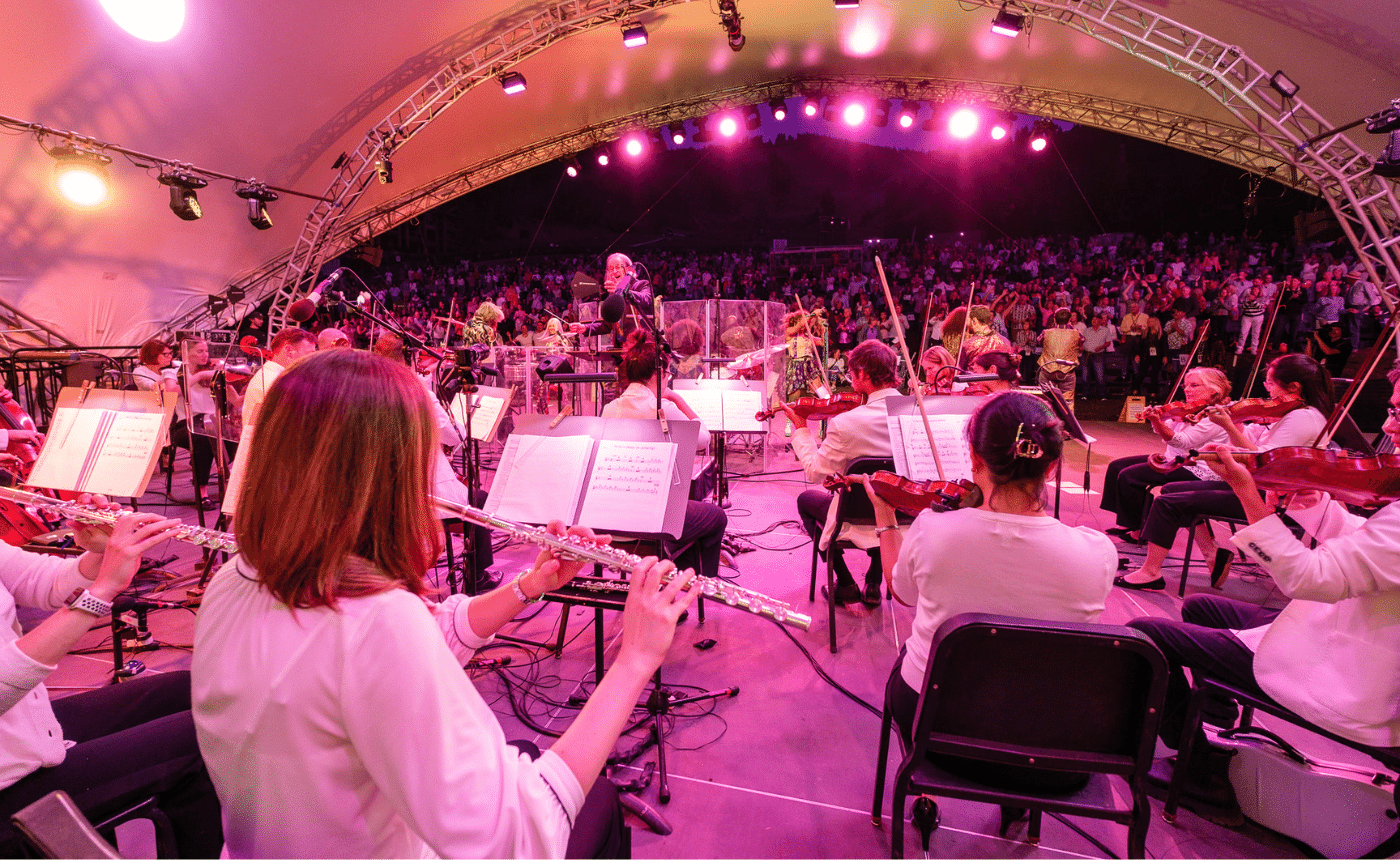Ligeti – Atmosphères
Györgi Ligeti (1923 — 2006): Atmosphères
Instrumentation: 4 flutes, 4 doubling piccolo, 4 oboes, 4 clarinets, 4th doubling E-flat clarinet, 3 bassoons, contra bassoon; 6 horns, 4 trumpets, 4 trombones, tuba; piano; strings
Performance time: 8 minutes
Background
In music, “innovative” can be a slippery term. We use it to describe everyone from a form-breaker like Beethoven, who reset the boundaries of music and meaning, to an orchestrator like Rimsky-Korsakov, who combined instruments in new and offbeat ways to create dazzling new colors of sound. But every so often, along comes someone like Györgi Ligeti — a composer so wholly original that his music defies categorization and resists imitation, yet exerts a major influence on the works of others. Ligeti’s music has a sound like nothing that was heard before it. The onrush of digital technology has taught us to appreciate “disruptive innovation,” but we can’t accurately describe Ligeti as a disruptive innovator: His music did not displace traditional forms of composition, replacing them with new ones. But they did expand the possibilities for every composer and for everyone who listens to classical music.
Considered a modern Hungarian composer, György Ligeti was born in 1923 to Hungarian-Jewish parents in a region in Transylvania/Romania. He studied at the Conservatory in Klausenburg, a Romanian town with a Jewish heritage of great significance, from 1941 to 1943; from 1945 to 1949 he was a student at the Franz Liszt Academy in Budapest. At this point, in his mid-twenties, Ligeti already possessed a questing musical intellect that combined rigorous traditional training with avant-garde ideas. Protective of his artistic freedom, he left his native country in December 1956 (after the Hungarian Revolution had abated), finding freelance work in the electronic music studio of West German Radio in Cologne (1957-58). There he studied other leading composers of the avant garde, including Karlheinz Stockhausen and Pierre Boulez. (A distinguished conductor and composer, Boulez, who died in January 2016, was considered the last great avant-garde composer of his generation.)
Ligeti’s reputation as a major voice in modern music solidified in the 1960s, when he became associate professor at the Summer School for Contemporary Music in Darmstadt and guest professor at the Royal Swedish Academy of Music in Stockholm. The German Academic Exchange Programme (DAAD) in Berlin awarded him a scholarship for the year 1969-70, and in 1972 he was appointed Composer in Residence at Stanford University. In 1973 he became Professor for Composition at the Hamburg Musikhochschule.
What to Listen For
Ligeti compositions such as Atmosphéres use pitch and beat in a way that makes our usual expectations of melody, harmony and rhythm almost disappear. The texture of the instruments sounds somehow astronomical; tones and internal rhythms are layered in precise, minute variations that meld together into a unity, like atoms of matter. The music seems to connect us with the vastness of space and with the universe inside our own minds. If this sounds like it might be unfamiliar and disorienting, it is not — even for listeners who might not have had the chance to hear Ligeti’s work in the concert hall. Always evocative and sometimes eerie, Ligeti’s music has become a staple in the movies to evoke the feeling of future technologies, space travel and the mysteries of the unknown. Though his work resists imitation, that has not stopped composers from trying, and its emotional power has given rise to a genre of microtonal murmurings, dithering strings and densely layered polyrhythms in which a core rhythm is becomes a kind of universal, interstellar pulse.
Ligeti’s influence on film soundtracks has made the vernacular of his music more familiar to the public than his name or his actual compositions. Responsibility for this odd circumstance can be laid at the feet of the film director Stanley Kubrick. Kubrick’s ultra-fine-tuned esthetic sensibilities extended to music, a field in which he was deeply erudite, and his selections for the most celebrated of his films’ scores — 2001: A Space Odyssey — famously include Johann Strauss Jr.’s waltz On the Beautiful Blue Danube, Richard Strauss’s tone poem Also Sprach Zarathustra, and Ligeti’s Atmosphères. The Blue Danube waltz, already universally familiar, was used in a memorably counter-intuitive way to evoke the weightlessness of space, and Also Sprach Zarathustra, obscure before Kubrick selected it, became an inescapable cliché symbolizing fateful importance. As for Atmosphères, it is heard more than once in 2001, most notably in the film’s “star gate” sequence, when astronaut David Bowman hurtles through a multidimensional realm of time and space to be reborn as a child of the universe.
Kubrick, famously exacting in his own art, may have been careless when it came to Ligeti’s. According to Hollywood legend, Kubrick’s musical choices were originally placeholders that were adopted as permanent only because he was dissatisfied with the other options presented to him, but Ligeti’s work was altered and used without the composer’s permission. After an out-of-court settlement including financial compensation for Ligeti, Kubrick turned to his music again, with chilling effect, in The Shining.












